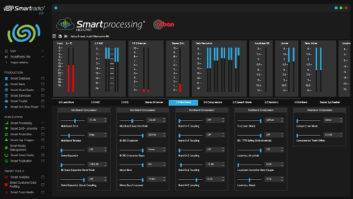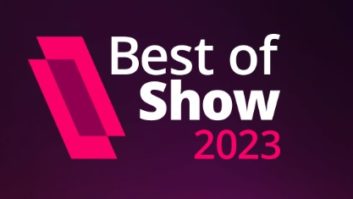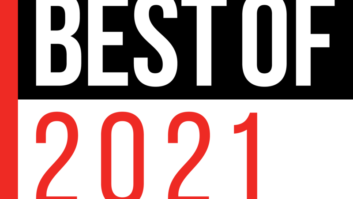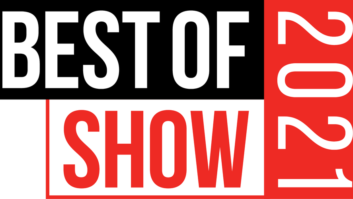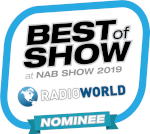 “Best of Show Up Close” is a series about participants in Radio World’s annual Best of Show at NAB Awards program.
“Best of Show Up Close” is a series about participants in Radio World’s annual Best of Show at NAB Awards program.
MaxxKonnect nominated the MaxxKonnect Wireless LTE internet link. MaxxKonnect Wireless acts as reliable link for remote productions or remote sites. It is designed to work right out of the box. MaxxKonnect has negotiated priority service deals with AT&T and Verizon to ensure service throughout most of the country.
We asked MaxxKonnect President and CEO Josh Bohn for more information.
Radio World: What is MaxxKonnect?
Josh Bohn: MaxxKonnect Wireless is prioritized LTE internet service designed for broadcast applications. We work on the Verizon and AT&T networks (T-Mobile is coming soon) which gives us the flexibility to give customers the carrier which works better in their area. Each one of our SIMs comes with priority on the carrier network, plus a true public static IP address, which is crucial for most broadcast applications.
RW: What inspired its creation?
Bohn: Back in 2014, I had a group of stations I was taking care of. I had one station out in the woods, about 14 miles from the nearest cell tower — and two and half hours from my house. The phone company couldn’t even keep a landline into it. So, it would go off the air, someone would call me and say it was off and I’d call the remote. This call was answered by a “this line is currently out of service” message, which was followed by me cussing for a bit, then making the long drive out to the woods. I’d arrive, push Plate ON on the transmitter, cuss at is some more, then drive back. A five-hour round tripper to literally push a button. After about the umpteenth time, I finally said, “There has to be a better way …”
[Read: Best of Show Up Close: Davicom Cortex 320]
We tried a regular LTE wireless modem and SIM into a Cradlepoint router, which is a fairly standard setup. This succeeded in getting an internet connection into the place, albeit with some external antennas. But it still wasn’t very good. And since there wasn’t a static IP — or even a public IP — we had to resort to a PC at the site and LogMeIn for any kind of site control or monitoring. This setup worked, but was clunky. The PC would update and cause problems, or wouldn’t reboot after a power fail, etc., etc. It was during this stage that I started negotiations with the carriers for what would become MaxxKonnect.
Once I was able to successfully negotiate our service with the carriers, we beta tested for over three years before ever introducing the product to the market. I wanted to be 100% confident that this service would be reliable and robust for broadcasters in as many areas as possible. We debuted it at NAB2018 as an aside to our main showing (which flopped, BTW). It caught the eye of Chris Tobin and Kirk Harnack. Since then, our user base has been steadily growing.
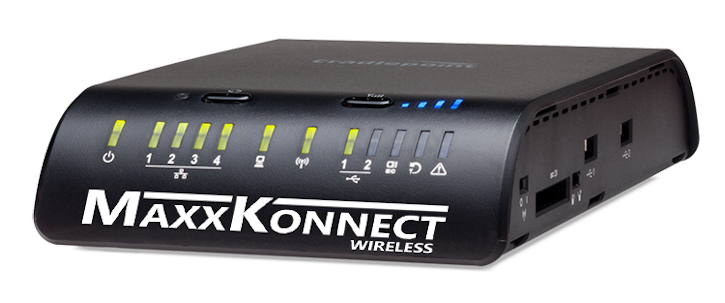
RW: What kind of questions did booth visitors ask about MaxxKonnect?
Bohn: The thing we heard the most was, “You can’t do this. This won’t work.” Well, I assure you, yes we can do it — and yes, it does work! People were somewhat skeptical of the priority part of the service, but we’ve got lots of test cases to prove it. Another was, “Well, I can get this from Verizon or AT&T tomorrow.” No, unfortunately you can’t. This service took me years to develop and isn’t available to the average person.
People also asked about the commitment. That’s one of the cool things — there is no commitment! If you get the service, try it and decide for whatever reason you don’t want it anymore, you can cancel! No fees, no arguments, no transferring between 12 departments. Just give us 30 days’ notice and pay your last bill — and that’s it. And we all stay friends. My goal for this was to make it easy for broadcasters to get the connectivity they needed for transmitter sites, remotes, etc.
They also asked about hardware. We do offer hardware from Cradlepoint and Pepwave, depending on your needs. A lot of customers like that they can order a complete package from us. When it arrives, it’s already programmed and setup, so all the customer has to do it take it out of the box, plug it in and — Voila! — they have internet. But, another cool feature is that our service is compatible with basically any LTE data hardware! Whether it’s a Comrex Connect modem, a Tieline modem, a Pantech modem or a Cradlepoint — MaxxKonnect works with it. As long as you can change the APN information to our private and/or semiprivate APN, you can use any hardware. We are currently testing with smart devices (phones, tablets, etc.) for data use with no voice or text/SMS. Preliminary tests show promise for use with audio programs like LuciLive, Skype and others. This would simplify remotes even more for some customers.
We’ve also got a POTS replacement service we’re starting to roll-out called MaxxPhone. It’s a low-cost way to get a POTS line for your remote control via your MaxxKonnect internet connection.

RW: Who would use MaxxKonnect?
Bohn: Anyone that needs internet service, basically! MaxxKonnect is usually deployed at remote sites where traditional internet delivery isn’t an option, and for remotes. The priority on the network is key for remotes with large crowds of people. It cuts through all the bandwidth clutter and lets your broadcast continue when 15,000 people show up with their 1.5 devices each. I’ve also got customers who are using it as a backup to their IP radio system at their transmitter sites; others who are using it as an emergency backup at their studios to keep their IP phone systems alive when their main internet fails; and others using it as primary STLs with their favorite hardware codec. A MaxxKonnect is an extremely useful tool to have around your station for all kinds of solve all kinds of connectivity needs!
RW: Why would someone use MaxxKonnect when wireless service is available everywhere?
Bohn: We get asked this a lot. Think of it this way — when you show up to a concert or a fair or a race or whatever, and you try to do something on your phone, what happens? Typically nothing. The cell towers or the venue Wi-Fi is so overloaded with everyone doing Facebook Live, Instagram, etc., that you can’t even load a web page, let alone do a broadcast. The prioritization of the MaxxKonnect service puts your connection on a different part of the carrier network, which bypasses all of the congestion in the public space, and lets you connect to do your broadcast reliably. Now, we can’t guarantee anything 100% — no one can. Internet and carrier anomalies do happen. We’ve had a few places (mostly in extremely rural parts of New England) where the service just won’t work because the carriers never built out the back end. In those cases, the customer just sent their router back and we refunded them. But, the MaxxKonnect service has been successfully used multiple times at major music festivals around the country, as well as concerts, SEC football games, the Regions Tradition golf tournament, major fairs and the Indianapolis 500 (with their 300,000+ attendees.)
RW: How much does MaxxKonnect cost? Is there a service fee?
Bohn: Yes. The monthly cost varies based on the amount of data you expect to need. We can do a 1 GB plan for as low as $56 and go all the way up to 100 GB plans. Our most popular plans are 10 GB. These range from $109 per month to $129 per month, depending on the carrier. Another awesome feature of the MaxxKonnect service is if you hit your “data cap,” nothing happens to your data stream. We won’t throttle you or turn you off. You just get billed for the overage. Broadcasters need reliability and known connectivity, not another headache of wondering if their station or broadcast is going to go off because they exceeded their data cap.
Also, if you purchase multiple plans on the same tier on the same carrier, their data pools together into on big “data bucket.” For example, if you get six 10 GB plans on Verizon for your company or station, you don’t have six individual 10 GB devices which are subject to overages after 10 GB. You’ve actually got 60 GB of total data that can be used across all of the devices. If one device uses 45 GB and the others each use 2 GB, you’re still under your cap. It’s great way to maximize value for a large scale deployment across a company or group.
RW: What does MaxxKonnect consist of?
Bohn: MaxxKonnect is a service primarily. You must get the MaxxKonnect SIM from Bohn Broadcast — you can’t get this directly from the carriers. MaxxKonnect becomes your ISP. You need some type of compatible hardware — which can be provided by the customer or by us. And that’s really it. It’s very simple from a deployment standpoint.
RW: Is there a 5G version in the works?
Bohn: Most likely, yes. We are currently able to achieve the reliability that we need using the existing 4G LTE technology. However, as 5G continues to roll out, our service will continue to evolve to utilize new technology to maintain our necessary level of reliability.
The Future Best of Show Awards program honors and helps promote outstanding new products exhibited at industry conventions like the spring NAB Show. Exhibitors pay a fee to enter; not all entries win. Watch for more coverage of participating products soon. To learn about all of the nominees and winners, read the 2019 Best of Show Program Guide.





